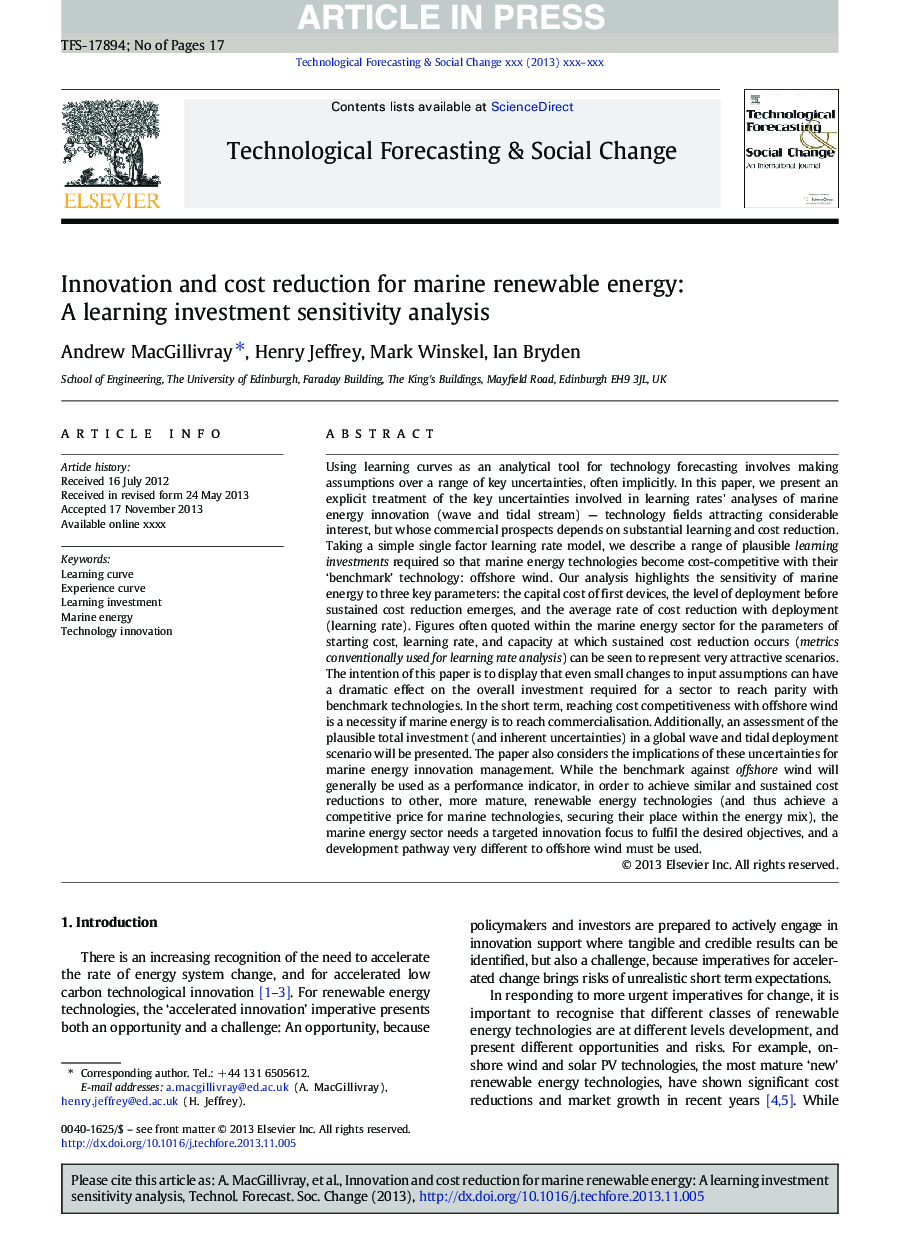| Article ID | Journal | Published Year | Pages | File Type |
|---|---|---|---|---|
| 7257166 | Technological Forecasting and Social Change | 2014 | 17 Pages |
Abstract
Using learning curves as an analytical tool for technology forecasting involves making assumptions over a range of key uncertainties, often implicitly. In this paper, we present an explicit treatment of the key uncertainties involved in learning rates' analyses of marine energy innovation (wave and tidal stream) - technology fields attracting considerable interest, but whose commercial prospects depends on substantial learning and cost reduction. Taking a simple single factor learning rate model, we describe a range of plausible learning investments required so that marine energy technologies become cost-competitive with their 'benchmark' technology: offshore wind. Our analysis highlights the sensitivity of marine energy to three key parameters: the capital cost of first devices, the level of deployment before sustained cost reduction emerges, and the average rate of cost reduction with deployment (learning rate). Figures often quoted within the marine energy sector for the parameters of starting cost, learning rate, and capacity at which sustained cost reduction occurs (metrics conventionally used for learning rate analysis) can be seen to represent very attractive scenarios. The intention of this paper is to display that even small changes to input assumptions can have a dramatic effect on the overall investment required for a sector to reach parity with benchmark technologies. In the short term, reaching cost competitiveness with offshore wind is a necessity if marine energy is to reach commercialisation. Additionally, an assessment of the plausible total investment (and inherent uncertainties) in a global wave and tidal deployment scenario will be presented. The paper also considers the implications of these uncertainties for marine energy innovation management. While the benchmark against offshore wind will generally be used as a performance indicator, in order to achieve similar and sustained cost reductions to other, more mature, renewable energy technologies (and thus achieve a competitive price for marine technologies, securing their place within the energy mix), the marine energy sector needs a targeted innovation focus to fulfil the desired objectives, and a development pathway very different to offshore wind must be used.
Related Topics
Social Sciences and Humanities
Business, Management and Accounting
Business and International Management
Authors
Andrew MacGillivray, Henry Jeffrey, Mark Winskel, Ian Bryden,
